1. SSS Congruence
- Books Name
- CBSE Class 7 Mathematics Book
- Publication
- Param Publication
- Course
- CBSE Class 7
- Subject
- Mathmatics
Congruent figureS
Figures having same shape and size are called congruent figures.
Two figures are congruent if each is an exact image of the other. E.g. coins of M5.
Concept of superimposition
If two figures are congruent, then without bending or changing their position, if one figure is placed over the other figure and they completely overlap each other, then two figures are said to be superimposed on each other.
- Two figures are congruent if one figure superimposes the other figure.

If triangle T1 superimposes triangle T2 and these two figures exactly cover each other, then they are called congruent. This method is also called superimposition method.
![]()
2. SAS Congruence
- Books Name
- CBSE Class 7 Mathematics Book
- Publication
- Param Publication
- Course
- CBSE Class 7
- Subject
- Mathmatics
Different types of Congruent figures
1. Congruent Line Segments : Two line segments are congruent if they are of same length.

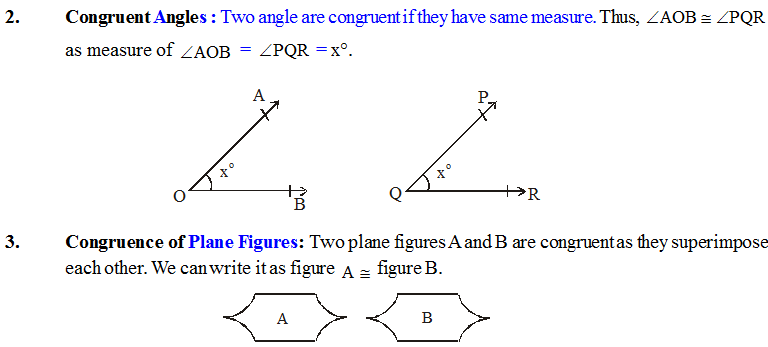
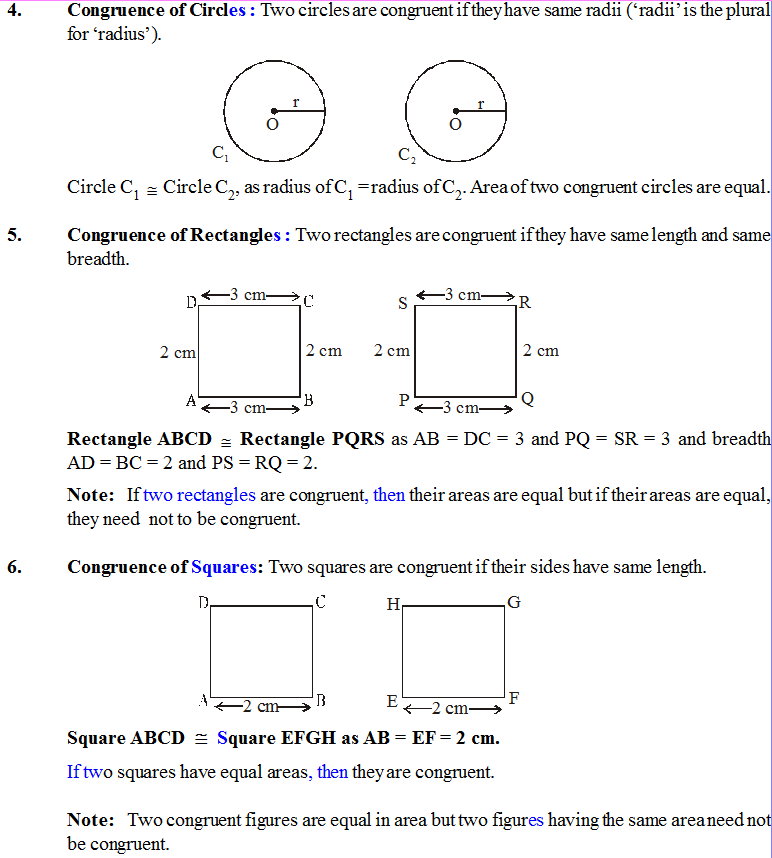
4. RHS Congruence
- Books Name
- CBSE Class 7 Mathematics Book
- Publication
- Param Publication
- Course
- CBSE Class 7
- Subject
- Mathmatics
1. Congruent Line Segments : Two line segments are congruent if they are of same length.

6. Congruence among Right Angled triangles
- Books Name
- CBSE Class 7 Mathematics Book
- Publication
- Param Publication
- Course
- CBSE Class 7
- Subject
- Mathmatics
CONGRUENCE OF TRIANGLES
Two triangles are congruent if pairs of corresponding sides and corresponding angles are congruent.

![]()
We can superimpose ∆∆ so as to cover it exactly.
During superimposing, side AB falls on side PQ, BC falls on side QR and AC falls on PR. Vertex A falls on P, B falls on Q and C fall on R. If two triangles are congruent then corresponding parts (i.e. angles and sides) that match one another are equal. Thus, in these two congruent triangles, we have;
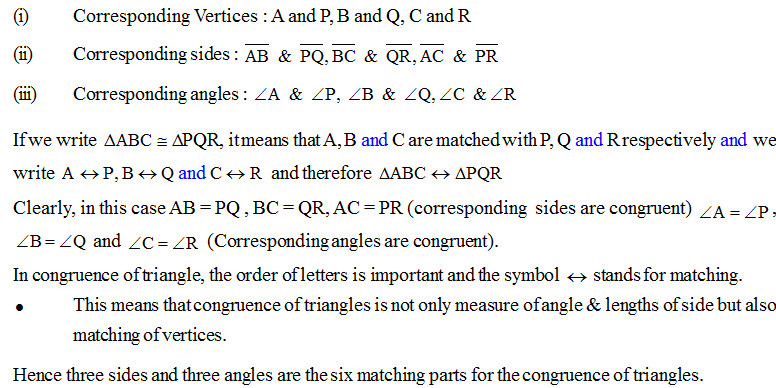
Criteria for Congruence of Triangles
- Books Name
- CBSE Class 7 Mathematics Book
- Publication
- Param Publication
- Course
- CBSE Class 7
- Subject
- Mathmatics
CONDITIONS OF CONGRUENCY OF TRIANGLES
Two triangles can be proved congruent using any of the following criteria :
I. SSS Congruency Criterion (Side-Side-Side)
If three sides of a triangle are equal to the corresponding sides of another triangle, then the two triangles are congruent by SSS congruence criterion.
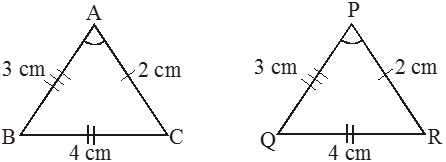
In ∆ABC and ∆PQR
AB = PQ = 3 cm
BC = QR = 4 cm
AC = PR = 2 cm
![]()
II. SAS Congruency Criterion (Side-Angle-Side)
If two triangles have two corresponding sides equal and the angle included between these sides is also equal, then the two triangles are congruent by SAS congruence criterion.
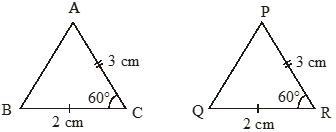
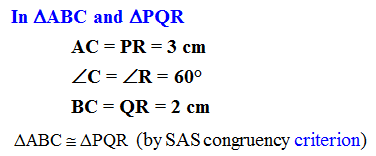
Note: Two triangles need not be congruent if the length of two sides and a non included angle (i.e. angle is not between the two given sides) of one triangle are equal to the length of two sides & a non-included angle of the other triangle
III. ASA Congruency Criterion (Angle-Side-Angle)
If two angles and the included side of one triangle are equal to the two corresponding angles and included side of another triangle, then the two triangles are congruent by ASA congruence criterion.

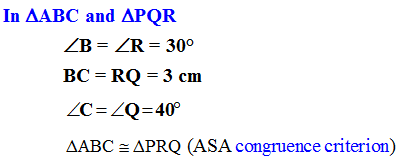
IV. AAS Congruency Criterion (Angle-Angle-Side)
If two angles and side opposite to one of the angles of one triangle are equal to two corresponding angles and side opposite to one of angles, then the two triangles are congruent by AAS congruence criterion.
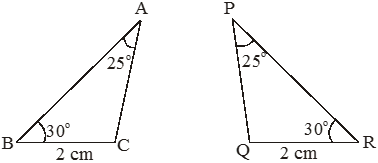
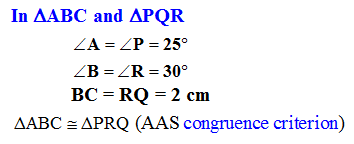
Congruence Among Right-Angled Triangles
- Books Name
- CBSE Class 7 Mathematics Book
- Publication
- Param Publication
- Course
- CBSE Class 7
- Subject
- Mathmatics
V. RHS Congruency Criterion : (Right Angle-Hypotenuse-Side)
If the hypotenuse and one side of a right-angled triangle are equal to the hypotenuse and one side of another right-angled triangle, then the two triangles are congruent by RHS congruence criterion.
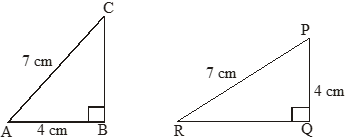

Note: Two triangles with equal corresponding angles need not be congruent. In such a correspondence, one of them can be an enlarged copy of other (They would be congruent only if they are exact copies of one another)
Special Properties of Isosceles and Equilateral Triangles :
1. The angles opposite to equal sides in an isosceles triangles are equal.
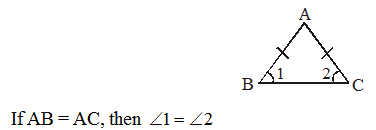
2. In an isosceles and an equilateral triangle the perpendicular drawn from the vertex to base bisects both the verticle angle and base.
(a) ABC is an Isosceles Triangle in which AB = AC
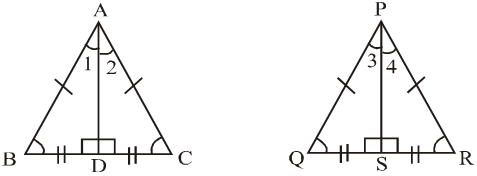
(b) PQR is and Equilateral Triangle, in which PQ = RQ = PR.
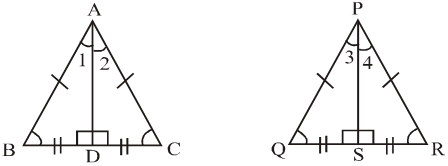
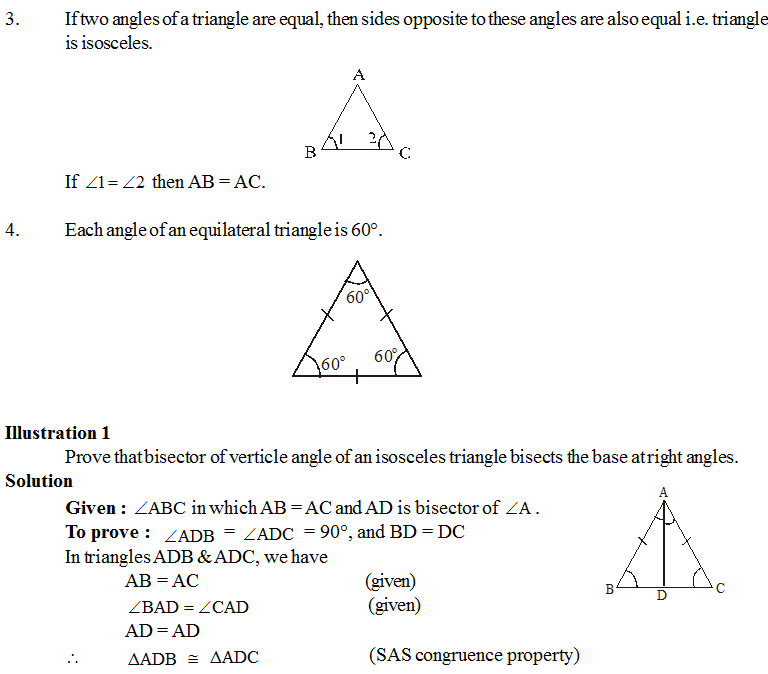
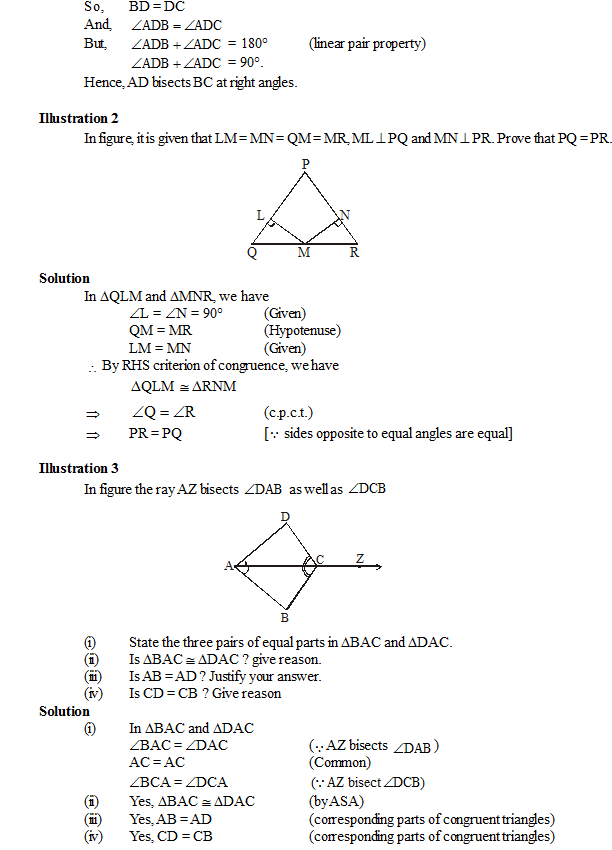

 ReginaTagebücher
ReginaTagebücher
 Param Publication
Param Publication
